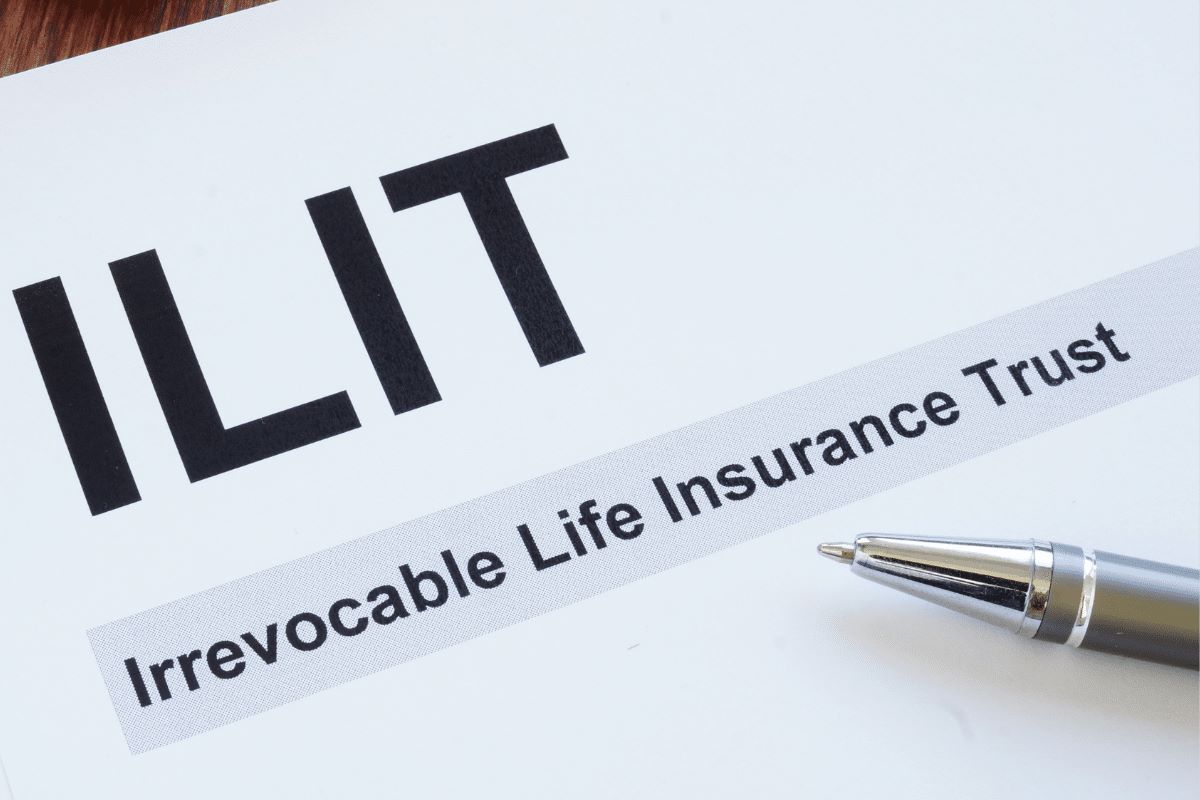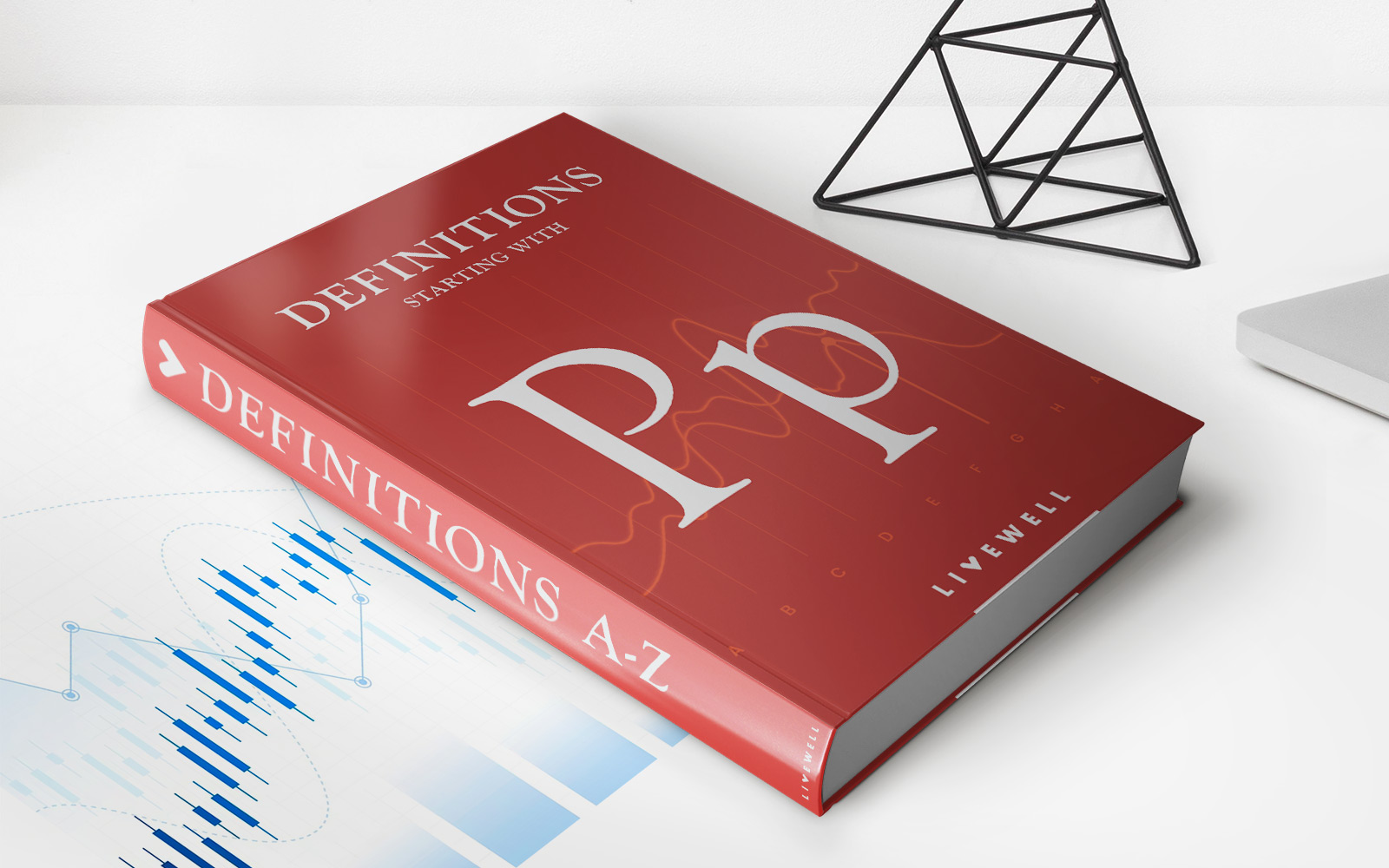

Finance
Why Put Life Insurance In A Trust?
Modified: February 21, 2024
Discover the benefits of putting your life insurance in a trust for financial security and peace of mind. Protect your loved ones and plan for the future with our expert financial advice.
(Many of the links in this article redirect to a specific reviewed product. Your purchase of these products through affiliate links helps to generate commission for LiveWell, at no extra cost. Learn more)
Table of Contents
Introduction
When it comes to financial planning and protecting your loved ones, life insurance is a crucial tool to consider. It provides a safety net for your family in the event of your untimely demise, offering them financial security and support during difficult times. However, many people may not be aware of the benefits of putting their life insurance in a trust.
A trust is a legal entity that allows you to transfer ownership of your assets to a designated trustee. It provides control and protection over the assets, ensuring they are managed and distributed according to your wishes. By placing your life insurance policy into a trust, you can unlock numerous advantages that can have a significant impact on your overall financial strategy.
In this article, we will delve into the reasons why you should consider putting your life insurance in a trust, exploring the benefits it brings and the steps you need to take to achieve this. Whether you’re looking to protect your assets, optimize your estate planning, or safeguard your policy’s proceeds, putting your life insurance in a trust can be a smart move.
What is a trust?
A trust is a legal arrangement in which a person, known as the grantor, transfers their assets to a trustee. The trustee is then responsible for managing and distributing the assets to the beneficiaries according to the terms and conditions specified in the trust agreement.
Trusts are established for various reasons, such as asset protection, estate planning, and charitable purposes. They provide a structured framework for managing wealth and ensuring that it is preserved and utilized in line with the grantor’s intentions.
There are different types of trusts, including revocable and irrevocable trusts. A revocable trust allows the grantor to maintain control over the assets during their lifetime and make changes to the trust agreement if needed. On the other hand, an irrevocable trust cannot be modified or revoked once it is established, offering greater asset protection and tax advantages.
Trusts offer a range of benefits and flexibility. They can be tailored to meet specific needs and serve as effective tools for wealth transfer and financial planning. By utilizing a trust structure, individuals can ensure the smooth transition of assets and provide for their loved ones in a structured manner.
It’s important to note that creating a trust involves legal expertise, and it’s advisable to consult with an attorney specializing in estate planning to ensure that the trust is set up correctly and aligns with your objectives.
Understanding life insurance
Life insurance is a contract between an individual (the policyholder) and an insurance company, designed to provide a lump sum payment, known as the death benefit, to the policyholder’s beneficiaries upon their death. The purpose of life insurance is to provide financial protection and support to the policyholder’s loved ones in the event of their passing.
There are different types of life insurance policies available, including term life insurance and permanent life insurance. Term life insurance provides coverage for a specified period, typically 10, 20, or 30 years. If the policyholder dies within the term of the policy, the death benefit is paid out to the beneficiaries. Permanent life insurance, on the other hand, offers coverage for the entire lifetime of the insured and accumulates a cash value component over time.
Life insurance policies can be an essential part of your financial planning, serving as a safety net for your family’s financial well-being. The death benefit can help cover funeral costs, outstanding debts, mortgage payments, child care expenses, and other financial obligations. It offers peace of mind, knowing that your loved ones will be taken care of financially when you are no longer there.
It’s important to carefully evaluate your life insurance needs and consider factors such as your age, health, financial responsibilities, and long-term goals. Working with a licensed insurance agent or financial advisor can help ensure that you select the right type and amount of life insurance coverage for your specific situation.
Benefits of Putting Life Insurance in a Trust
Placing your life insurance policy in a trust can offer several advantages that can enhance your overall financial plan. Let’s explore some of the key benefits:
1. Asset protection:
By transferring your life insurance policy into a trust, you can safeguard the policy’s proceeds from potential creditors or legal claims. Placing the policy in an irrevocable trust can create a level of asset protection, ensuring that the death benefit is protected for the intended beneficiaries.
2. Estate planning:
Including the life insurance policy in your estate planning through a trust can help you manage the distribution of assets and avoid potential issues that may arise upon your passing. It allows you to specify how the death benefit will be distributed among your beneficiaries, ensuring that your wishes are carried out as intended.
3. Avoiding probate:
When a life insurance policy is placed in a trust, it bypasses the probate process, resulting in quicker and more efficient transfer of assets. This means that the beneficiaries can receive the death benefit without any delays or unnecessary expenses associated with probate.
4. Tax advantages:
Depending on the laws in your jurisdiction, placing your life insurance policy in a trust can offer potential tax advantages. It may help minimize estate taxes, income taxes, and gift taxes, thereby maximizing the amount that can be passed on to your beneficiaries.
5. Ensuring proper distribution:
By utilizing a trust, you can designate specific instructions on how the life insurance proceeds are to be used and distributed. For example, you can outline that the funds should be used for educational expenses, charitable donations, or to provide ongoing income to a surviving spouse. This ensures that the policy proceeds are used in a manner that aligns with your values and intentions.
It’s essential to consult with an experienced attorney specializing in trusts and estate planning to ensure that the trust is structured correctly and meets your unique needs and goals.
Asset protection
One of the key benefits of putting your life insurance in a trust is the asset protection it provides. By transferring your life insurance policy to a trust, you create a legal barrier that shields the policy’s proceeds from potential creditors or legal claims.
Life insurance policies are often considered an asset and can be subject to claims made by creditors if they are part of your estate. However, placing the policy in an irrevocable trust can help protect it from such claims. Once the transfer is made, the policy no longer belongs to you and is instead owned by the trust. As a result, it is no longer considered your personal asset and may be shielded from creditors’ reach.
This asset protection is particularly valuable in circumstances where you may have substantial personal or business debts, or if you work in a profession that carries a higher risk of liability. By placing your life insurance policy in a trust, you can ensure that your loved ones will receive the intended benefits without interruption or reduction due to potential creditors.
Additionally, asset protection can also be significant in situations involving divorce or disputes over inheritance. By placing your life insurance in a trust, you can help safeguard the proceeds from being subject to division in divorce settlements or legal battles among family members.
It’s important to note that the level of asset protection offered by a trust may vary depending on your jurisdiction and the specific circumstances surrounding your assets and liabilities. Consulting with a knowledgeable attorney who specializes in asset protection and trust formation is crucial to ensure that your life insurance policy is properly structured within the trust to maximize the asset protection benefits.
Estate Planning
Placing your life insurance policy in a trust can be a crucial component of effective estate planning. Estate planning involves organizing your assets and making decisions on how you want them to be managed and distributed after your passing. By utilizing a trust, you can have more control over the distribution of your estate, including your life insurance proceeds.
One of the main benefits of incorporating life insurance into your estate plan through a trust is the ability to specify how the death benefit should be distributed among your beneficiaries. Without a trust, the proceeds would typically become part of your estate and be subject to probate. This can lead to delays and additional costs, as well as potential disputes among family members.
By placing your life insurance in a trust, you can outline clear instructions on how the funds should be distributed. For example, you might specify that the proceeds are to be used to cover educational expenses for your children, fund a charitable organization, or provide ongoing income to a surviving spouse. This allows you to ensure that your wealth is managed and distributed according to your wishes, providing for your loved ones in a structured manner.
In addition, estate planning through a trust can also help minimize potential estate taxes. The value of the life insurance policy can be excluded from your taxable estate, reducing the overall estate tax liability. This can help preserve more of your assets for your beneficiaries and ensure that the maximum amount of funds are available for their benefit.
It’s important to regularly review and update your estate plan to reflect any changes in your circumstances or wishes. Consulting with an estate planning attorney who specializes in trusts can help ensure that your life insurance policy is seamlessly integrated into your overall estate plan, providing peace of mind and clarity for you and your loved ones.
Avoiding Probate
One significant advantage of putting your life insurance policy in a trust is the ability to bypass the probate process. Probate is the legal process through which a deceased person’s estate is administered and distributed under the supervision of a court. However, utilizing a trust can help you avoid the complexities and time-consuming nature of probate.
During probate, the court reviews the deceased person’s will, validates it, and oversees the distribution of assets to beneficiaries. This process can be lengthy, typically taking several months or even years to resolve. Additionally, probate can involve significant costs, including court fees and attorney fees.
By placing your life insurance in a trust, you ensure that the policy’s proceeds are distributed directly to the trust’s beneficiaries, bypassing the probate process altogether. This can offer several advantages:
- Efficiency: Assets held in a trust can be distributed relatively quickly, allowing your beneficiaries to receive the life insurance proceeds promptly. This can be particularly important in situations where immediate financial support is needed.
- Privacy: Probate is a public process, meaning the details of your estate, including the value of your assets and the identities of your beneficiaries, become a matter of public record. Placing your life insurance in a trust provides an added layer of privacy, as the details of the trust remain confidential.
- Cost savings: Avoiding probate can help save on expenses associated with the process. Probate fees, court costs, and attorney fees can significantly reduce the amount that ultimately goes to your beneficiaries. By utilizing a trust, you can potentially minimize these costs and ensure that more of the life insurance proceeds go directly to your loved ones.
It’s important to note that bypassing probate through a trust requires careful planning and execution. Working with an attorney who specializes in trusts and estate planning can help ensure that the trust is structured correctly and aligns with your specific goals and intentions.
Tax Advantages
Placing your life insurance policy in a trust can offer potential tax advantages, depending on the tax laws in your jurisdiction. Here are some key tax benefits to consider:
1. Estate tax reduction:
Life insurance proceeds are typically included in the value of your estate for estate tax purposes. However, when you transfer your life insurance policy to an irrevocable trust, the policy is no longer considered part of your taxable estate. This can help reduce the estate tax liability, potentially saving your beneficiaries a significant amount in taxes.
2. Gift tax savings:
Transferring your life insurance policy to a trust can also be a strategic way to make tax-efficient gifts to your loved ones. Generally, any gifts you make during your lifetime that exceed the annual gift tax exclusion may be subject to gift taxes. However, by placing the life insurance policy in an irrevocable trust, you can utilize the annual gift tax exclusion to gift the premiums paid on the policy, reducing your overall taxable estate.
3. Income tax benefits:
Life insurance policy proceeds are typically received by beneficiaries income tax-free. However, if the policy is owned by the insured, the death benefit could be subject to income tax if it exceeds a certain threshold. Placing the policy in an irrevocable trust can help mitigate potential income tax liabilities, ensuring that your beneficiaries receive the full amount of the death benefit free from income tax.
4. Generation-skipping transfer tax planning:
If you wish to leave a substantial amount of wealth to future generations, utilizing a trust can help you navigate the complexities of the generation-skipping transfer tax (GSTT). The GSTT is an additional tax imposed on transfers to individuals who are more than one generation below you. By leveraging a trust, you can structure distributions to skip generations and potentially minimize the impact of the GSTT.
It’s important to consult with a tax professional or estate planning attorney who is well-versed in the tax laws applicable to your situation. They can provide guidance on the specific tax advantages and implications associated with placing your life insurance in a trust, ensuring that you maximize the benefits and comply with tax regulations.
Ensuring Proper Distribution
One of the key benefits of putting your life insurance policy in a trust is that it allows you to ensure the proper distribution of the proceeds according to your specific wishes and intentions. By utilizing a trust, you can outline clear instructions on how the funds should be used and distributed, providing guidance to your beneficiaries and preserving your legacy.
Here are some ways placing your life insurance in a trust helps ensure proper distribution:
1. Designating beneficiaries:
When you establish a trust, you can specify the beneficiaries who will receive the life insurance proceeds. This allows you to control the distribution, ensuring that the funds are directed to the individuals or organizations you choose.
2. Establishing conditions and restrictions:
A trust gives you the ability to establish conditions and restrictions on how the life insurance proceeds are used. For example, you can stipulate that the funds can only be used for specific purposes such as education, medical expenses, or maintaining a certain lifestyle. Limiting access to the funds in this way helps ensure that they are utilized in alignment with your values and intentions.
3. Providing ongoing income:
If you have a surviving spouse or dependents who rely on your financial support, placing your life insurance policy in a trust can help provide ongoing income. The trust can be structured to distribute regular payments or establish a stream of income to support your loved ones and address their long-term financial needs.
4. Protecting minors and individuals with special needs:
A trust is beneficial when you have beneficiaries who are minors or have special needs. Placing the life insurance policy in a trust allows you to designate a trustee who will manage the funds on behalf of these beneficiaries. This ensures that the funds are used appropriately and provides ongoing support and financial security.
It’s important to work with an experienced attorney specializing in trusts and estate planning to properly structure your trust and outline the distribution instructions. They can help ensure that your intentions are clearly documented and legally binding, providing peace of mind that your desires regarding the distribution of your life insurance proceeds will be honored.
How to Put Life Insurance in a Trust
Putting your life insurance policy in a trust involves a few key steps to ensure it is properly transferred and incorporated into the trust structure. Here’s a general outline of the process:
1. Choose the right trust:
The first step is to determine the type of trust that aligns with your specific needs. Common options include a revocable living trust or an irrevocable life insurance trust (ILIT). The choice will depend on factors such as your goals, estate planning objectives, and desired level of control over the policy’s proceeds.
2. Consult with an attorney:
Working with an experienced attorney specializing in trusts and estate planning is crucial to ensure that the trust is properly established and aligns with your objectives. They can guide you through the legal requirements and help draft the necessary trust documents.
3. Create the trust agreement:
The trust agreement is a legal document that outlines the terms and conditions of the trust. It typically includes provisions specifying how the life insurance policy will be transferred to the trust, who the beneficiaries are, and how the proceeds should be distributed. The trust agreement must comply with relevant state laws and regulations.
4. Transfer ownership of the life insurance policy:
To place your life insurance in the trust, you must transfer ownership of the policy to the trust. This is usually done by completing a Change of Ownership form provided by your insurance company. The trust becomes the new owner of the policy, and the policy will be held within the trust.
5. Update beneficiary designations:
Once the life insurance policy is transferred to the trust, it’s important to update the beneficiary designations. Instead of naming individual beneficiaries directly on the policy, you will designate the trust itself as the beneficiary. This ensures that the policy proceeds are distributed according to the instructions outlined in the trust agreement.
6. Regularly review and update:
Estate planning is an ongoing process, and it’s essential to regularly review and update your trust as needed. Changes in your circumstances, such as marriage, divorce, birth of children, or changes in financial goals, may require modifications to the trust. Regularly reviewing your trust with an attorney can help ensure that it remains up-to-date and aligned with your wishes.
It’s important to work closely with an attorney and consult with financial professionals who specialize in estate planning and life insurance to ensure that the trust and policy transfer are executed correctly and in compliance with legal requirements.
Choosing the Right Trust
When considering the option of placing your life insurance policy in a trust, it’s important to choose the right trust structure that aligns with your specific goals and circumstances. Two common types of trusts to consider are the revocable living trust and the irrevocable life insurance trust (ILIT). Let’s explore these options:
1. Revocable Living Trust:
A revocable living trust is a flexible trust that can be modified or revoked during your lifetime. It allows you to retain control over your assets, including your life insurance policy, while providing for the distribution of those assets after your passing. Benefits of a revocable living trust include:
- Flexibility: You have the ability to make changes to the trust as your circumstances evolve.
- Probate avoidance: Placing your life insurance policy in a revocable living trust can help bypass the probate process, ensuring quicker and more efficient distribution to your beneficiaries.
- Incapacity planning: A revocable living trust can provide instructions for the management of your assets in the event of your incapacity.
2. Irrevocable Life Insurance Trust (ILIT):
An ILIT is an irrevocable trust specifically designed to hold life insurance policies. Once established, an ILIT cannot be modified or revoked without the consent of all beneficiaries. Benefits of an ILIT include:
- Asset protection: Placing your life insurance policy in an ILIT can help protect the policy’s proceeds from potential creditors or legal claims.
- Estate tax reduction: Transferring your life insurance policy to an ILIT can help remove it from your taxable estate, reducing potential estate tax liabilities.
- Safeguarding control: While an ILIT limits your control over the policy, you can appoint a trusted individual or professional trustee to manage the trust and ensure proper distribution.
Choosing the right trust structure depends on various factors, such as your estate planning goals, level of control desired, and asset protection needs. Consulting with an experienced estate planning attorney can help you evaluate your options and determine the most appropriate trust structure for your specific situation.
Consulting with an Attorney
When it comes to putting your life insurance policy in a trust, it is highly recommended to consult with an experienced attorney specializing in trusts and estate planning. An attorney can provide valuable guidance and expertise throughout the process, ensuring that your wishes are properly documented and legally protected. Here’s why consulting with an attorney is important:
Knowledge and Expertise:
Estate planning laws can be complex and vary from jurisdiction to jurisdiction. An attorney specializing in trusts understands the intricacies of the law and can help navigate through the legal requirements and formalities associated with setting up a trust.
Customized Advice:
Every individual’s circumstances are unique, and an attorney can provide tailored advice based on your specific needs and goals. They can assess your financial situation, understand your family dynamics, and offer personalized strategies to ensure that the trust is structured in the most effective manner.
Choosing the Right Trust:
An attorney can guide you in selecting the appropriate type of trust based on your objectives. They will explain the differences between revocable and irrevocable trusts and help you determine which option best suits your circumstances.
Proper Trust Structure:
The attorney will assist in drafting the trust agreement, ensuring that it includes all necessary provisions, such as the transfer of the life insurance policy, designation of beneficiaries, and instructions for distribution. They will ensure that the trust is legally sound and compliant with relevant laws and regulations.
Continual Review and Updates:
An attorney can provide ongoing support in reviewing and updating your trust as needed. Life circumstances, tax laws, and estate planning regulations may change over time, and an attorney can help you adapt your trust to reflect these changes and ensure it remains effective and up-to-date.
Throughout the process, an attorney will be your trusted advisor, providing guidance, answering your questions, and addressing any concerns you may have. They are equipped with the necessary knowledge and experience to protect your interests and help you make informed decisions regarding your life insurance policy and trust planning.
Remember, each individual’s situation is unique, so it’s crucial to consult with an attorney who specializes in trusts and estate planning to ensure that your specific needs and goals are properly addressed.
Conclusion
Putting your life insurance policy in a trust can offer a range of benefits and serve as a valuable tool in your overall financial plan. Whether you’re looking to protect your assets, optimize estate planning, avoid probate, or take advantage of tax benefits, a trust can provide the structure and control necessary to achieve your goals.
By placing your life insurance in a trust, you can ensure the proper distribution of the benefit according to your wishes, protect the assets from potential creditors, and provide ongoing financial support to your loved ones. It allows you to customize the terms and conditions of distribution, ensuring that the proceeds are used in a manner that aligns with your values and intentions.
It’s essential to consult with an experienced attorney specializing in trusts and estate planning to navigate the legal requirements and structure your trust correctly. They can guide you through the process, ensure compliance with the law, and provide personalized advice based on your unique circumstances.
Remember to regularly review and update your trust to reflect any changes in your life, such as marriage, divorce, or the birth of children. Your trust should evolve with your goals and priorities to ensure that it remains current and effective.
Placing your life insurance policy in a trust is a strategic decision that requires careful consideration. By incorporating this important tool into your financial plan, you can provide financial security and peace of mind to your loved ones, ensuring that your legacy is protected and your intentions are carried out.














